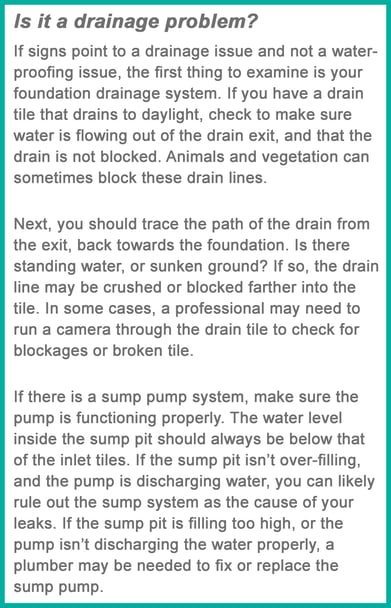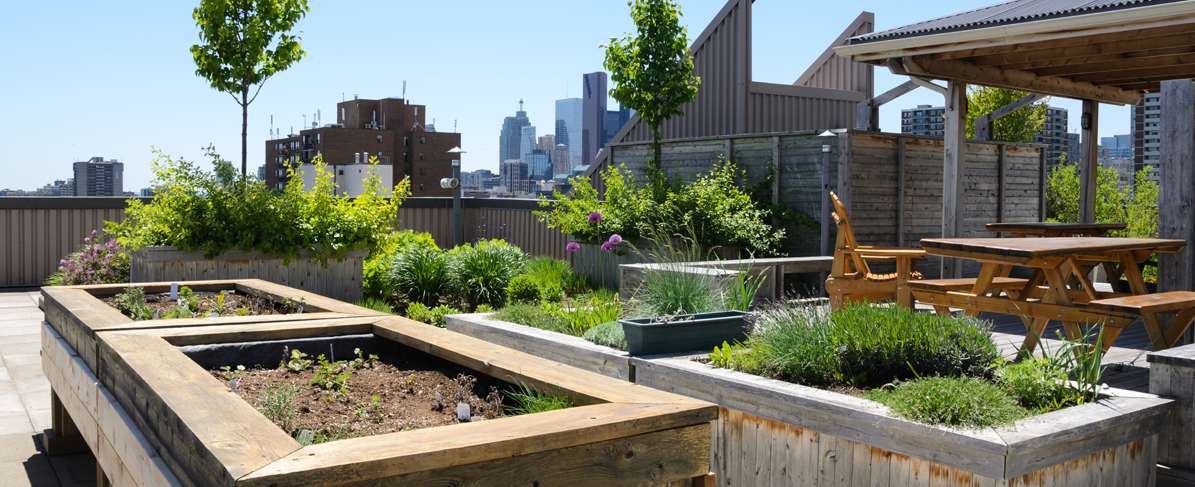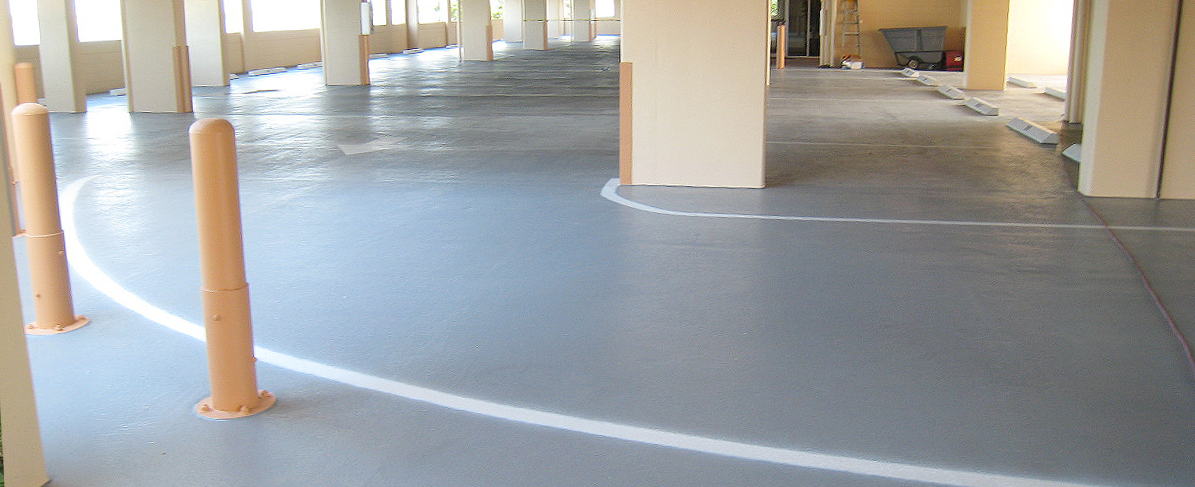Finding water in the basement is often cause for panic for homeowners and builders. Fortunately, the most common causes of leaking basements can be easily recognized. Follow these five steps to identify the source of the leak and the proper remedy.
1. Identify the Wet Area(s)
Before you can pinpoint the source of a leaking basement, you’ll first need to identify all the areas that show signs of interior leaking. These signs include bubbling paint, wet spots or discolored concrete. Make sure to mark these as possible issue areas and note these locations on the outside of the foundation.
Note that if the entire basement shows signs of moisture, or you have standing water coming up through the floor, you may not have a waterproofing issue, but a drainage issue instead (see sidebar).
2. Check your Soil Grade
Does it slope away from the foundation? A negative grade, sloping towards the foundation, or standing water against the outside basement wall can cause the waterproofing system to fail.
Is the grade level too far above the top of the waterproofing? Sometimes landscaping can be built up too high, allowing water to leak in above the installed waterproofing.
3. Check your Gutters and Downspouts
Are the gutters and downspouts functioning properly, carrying water away from the house? Overflowing gutters or downspouts spilling water against the foundation can overload the waterproofing system and be a common cause of leaking basements.
Check the tiles or conductor lines that carry the downspout water, or the water from the sump pump away from the house. Often, as the ground settles, these conductor lines can separate, and spill water against the foundation and can overburden the waterproofing system.
4. Conduct a Flood Test
Once you’ve eliminated these possible causes, it’s time to test the performance of the waterproofing system. To avoid causing more damage, consider hiring a licensed and insured contractor to flood test for you.
- Step 1: In the center of the area that's showing signs of moisture, or the area that seems to be leaking the most, dig a small trench against the foundation, approximately 4 to 6 inches (10 to 15 centimeters) below the top of the waterproofing, and approximately 6 to 10 feet (2 to 3 meters) wide. If it's a poured wall foundation, and you've identified a crack in the wall, the trench only needs to be a foot (half a meter) or so in width, center over the crack.
- Step 2: Run water into the trench through a garden hose making certain the water drains through the soil and isn’t filling the trench, spilling over the waterproofing (this allows you to determine if the leak is below grade, or above grade). You may need to increase or decrease the flow of the water depending on how quickly the trench is filling with water, or how quickly the water is draining down the wall.
- Step 3: While the water is running, head inside and check for any signs of water coming through the wall. This test may need to run as long as 20 minutes. If water enters through the wall during this test, that’s a sign that your waterproofing system may have failed, and you should contact a waterproofing or foundation repair contractor.
5. The Fix
First, you should always check your home’s closing paperwork for a possible waterproofing warranty. If no warranty is present, call a reputable basement waterproofing expert to repair the leak for you.
Some foundation leaks can be resolved simply by coating the interior wall with a waterproofing sealer, or by using a crack repair or crack injection system depending on the location and severity of the leak.
These are some of the most common causes of leaking basements, and some surefire ways to identify the source. Identifying the issue and the cause minimize long-term damage and help get the basement in question back to being dry and comfortable.






